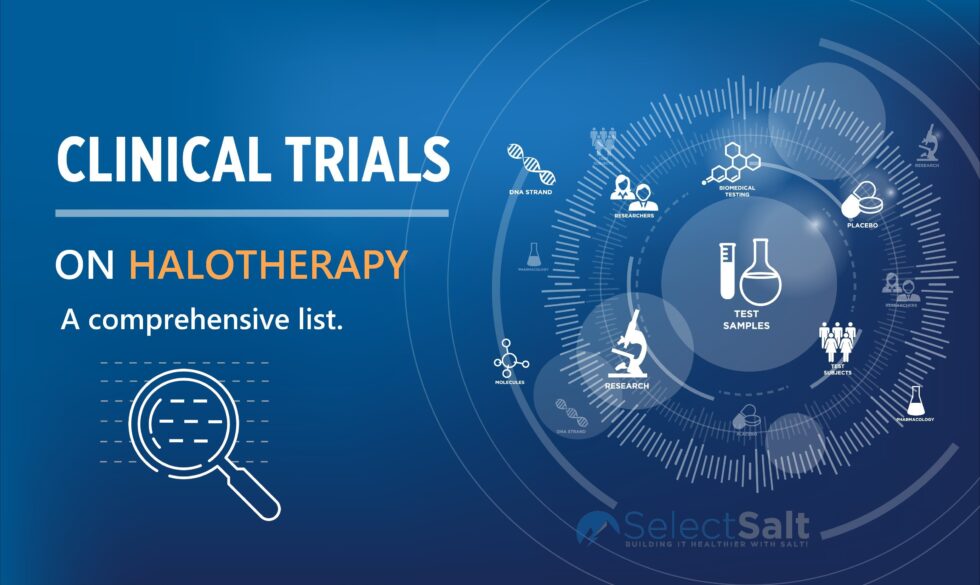Halotherapy, also known as salt therapy, involves breathing air that contains salt particles.
It is a form of speleotherapy, a respiratory therapy that mimics the environment of natural salt caves. The main principle behind halotherapy is the inhalation of natural crystallized salt via aerosols or directly from the environment, with the aim of enhancing respiratory health and overall quality of life.
Clinical Trials and Findings
Several clinical trials have been conducted to assess the efficacy of halotherapy in treating respiratory and skin conditions:
Respiratory Conditions: A review of literature from January 1980 to December 2018 found that halotherapy showed improvements in various pulmonary function measures such as forced expiratory volume, forced vital capacity, and peak expiratory flow. It also improved health-related quality of life as assessed by questionnaires. The studies indicated that halotherapy positively affects patients with chronic respiratory diseases by improving mucociliary elimination and lung function.
However, it is important to note that currently, there are no official guidelines for the use of halotherapy in the form of salt rooms or dry powder inhalers, but it is suggested as a possible adjuvant therapy [9†source].
Skin Conditions: A study conducted in 1994 on the efficacy of speleotherapy (a form of halotherapy) in treating atopic dermatitis in children reported positive trends in the patients’ dermatological status and immune homeostasis.
About 58% of the patients showed a complete response, while 20% had a partial response. This study recommended speleotherapy for the treatment of atopic dermatitis [27†source].
General Health Benefits: The anti-inflammatory and healing effects of salt therapy on diseases like psoriasis, eczema, and neurodermatitis have been documented.
Aerosol salt therapy and salty baths are also explored for their potential benefits in treating chronic rashes, burns, and wounds.
Mechanism of Action

Clinical Trials Proving the Efficacy of Salt TherapyHalotherapy works primarily through the inhalation of salt particles. These particles are believed to have antibacterial and anti-inflammatory properties.
They also facilitate mucociliary transport and reduce immunoglobulin E (IgE) levels. This mechanism can relieve symptoms and improve functional parameters in various respiratory conditions, including sinusitis, bronchiectasis, chronic bronchitis, mild and moderate asthma, and chronic obstructive pulmonary disease (COPD). Rinsing with hypertonic saline has also been found beneficial in reducing airway inflammation in bronchiolitis patients [28†source].
Skin Conditions
The anti-inflammatory and healing effects of halotherapy on skin diseases such as psoriasis, eczema, neurodermatitis, chronic rashes, burns, and wounds have also been a subject of interest. Aerosol salt therapy and salt baths have been explored for their potential benefits in these conditions [29†source].
Conclusion
Halotherapy, with its unique approach of utilizing salt-enriched air, shows promising potential in improving respiratory functions and skin conditions. The science behind it lies in the properties of salt particles, which have anti-inflammatory, mucolytic, and antibacterial effects. As it stands, halotherapy remains a compelling complementary therapy for those seeking alternative or adjunct treatments for respiratory and skin conditions.
We hope you found the information above useful. Leave a comment below, or contact us if you have any questions.
